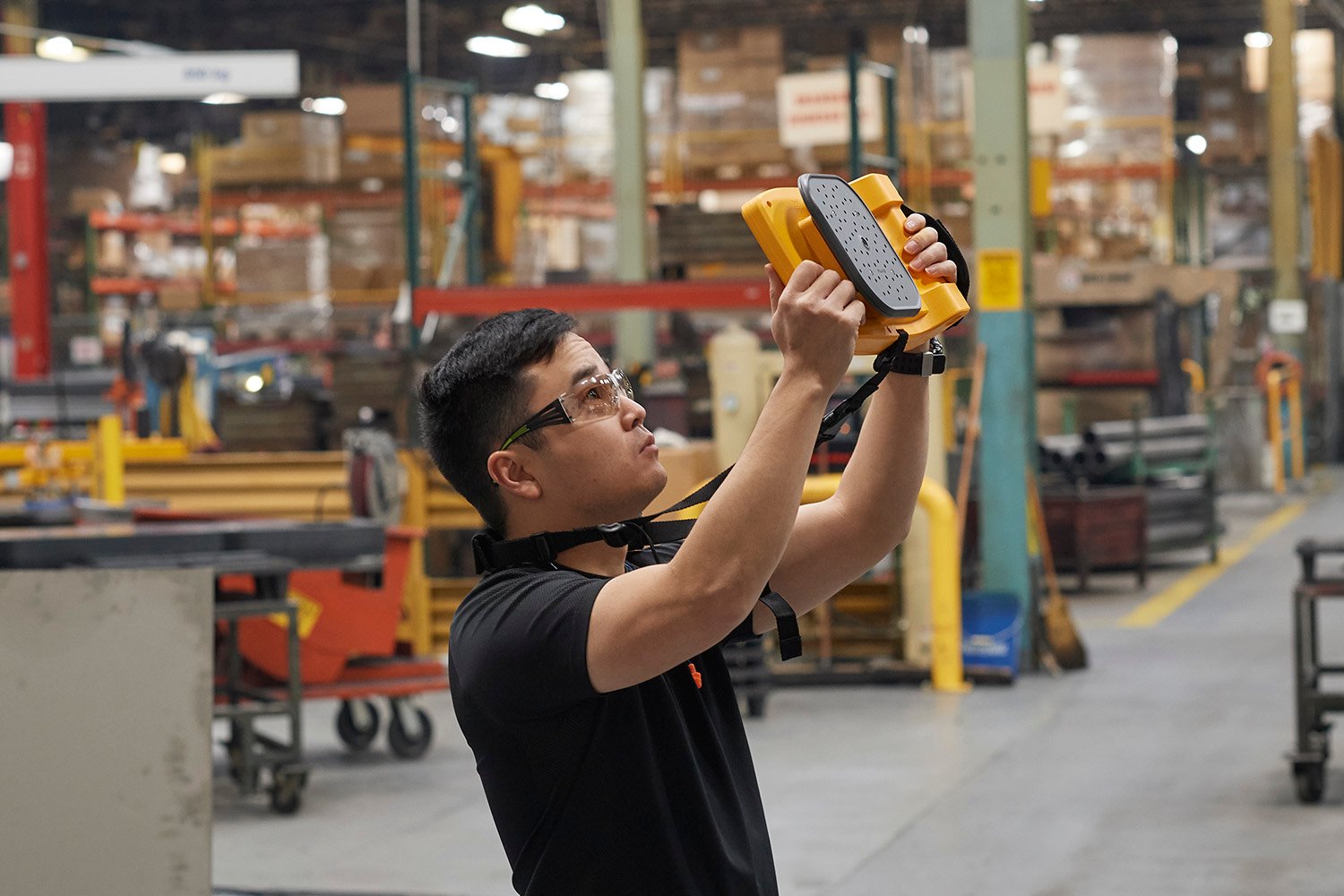Even the smallest air leaks can compound product and energy waste and lost production time—especially for a production line that cannot function without compressed air to run its tools and processes.
If there isn’t enough compressed-air pressure for the equipment to function at optimal levels, the results will be costly. The more leaks in the system there are, the harder the compressor needs to work to deliver the needed air to the equipment, which is not optimal for the compressor. This increase in demand raises the risk of an inadequate amount of compressed air for the tools and process equipment.
Compressed air leaks also increase energy costs. According to the U.S. Department of Energy, a single 1/8” (3mm) line in a compressed-air line can cost upwards of $2,500 a year.

A partner in air-leak detection
How do you stay on top of controlling air leaks with so many other priorities on your mind? That’s the question a leading heavy equipment manufacturer recently answered as they discovered a new partner in air-leak detection.
This manufacturer uses between 1800 and 2600 CFM of compressed air each day. That volume of compressed air runs up to 200 torque tools per line, as well as process equipment responsible for moving large sheets of half-inch steel and positioning parts. If a single line had a leak, it could impact production and increase energy waste. And that is just one leak…
When Fluke offered this company a chance to test its new Fluke ii900 Sonic Industrial Imager (Acoustic Imager), they immediately accepted. The ii900’s array of tiny super sensitive microphones detect sounds both in the human hearing range and the ultrasonic range and even more uniquely, allows the user to actually see sound.
“Being able to visualize where the problem is adds another dimension,” says the company’s maintenance manager. “You can identify which thread, fitting, or hose is affected. Being able to pinpoint where the leak is coming from on that image is extremely exciting.”
The ii900 can visually scan large areas from up to 50 meters (164 feet) away, expediting leak detection at the plant and significantly reducing the number of hours previously spent on that task.
“Some days we can find and repair 30 or 40 leaks in just a couple hours,” the manager stated. “Plus, we can use the ii900 during production hours when it’s extremely loud in here and still been able to capture leaks at the rafter level up to 20 or 30 feet away.”
Scanning for leaks without affecting production is a huge advantage the manufacturer. “We never thought of testing for air leaks during production because we couldn’t shut down the aisles and move people out of the area to go and look at a potential leak,” says the manager. “Now, we can stand on the sideline and scan the air lines overhead while carts and people are moving underneath. We’re not affecting their work, which is better for everyone.”
Watch the video how the Fluke ii900 compares to traditional ultrasonic leak detectors: